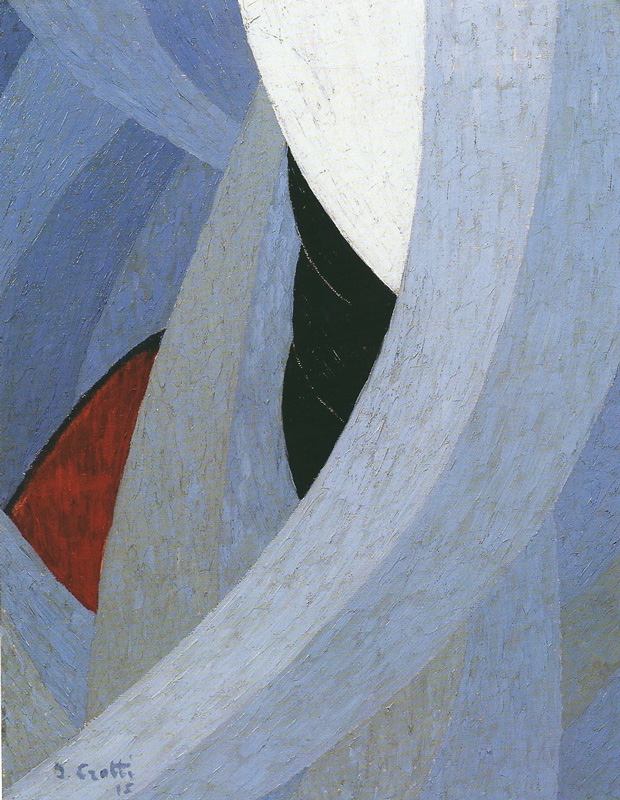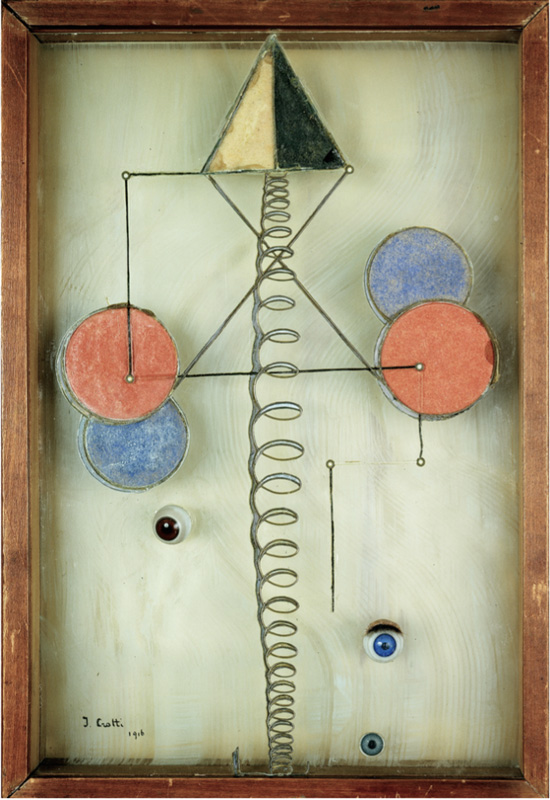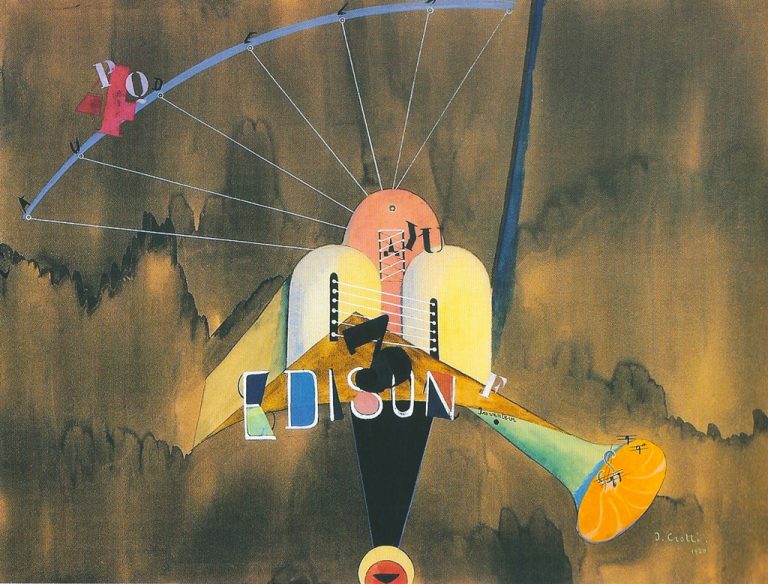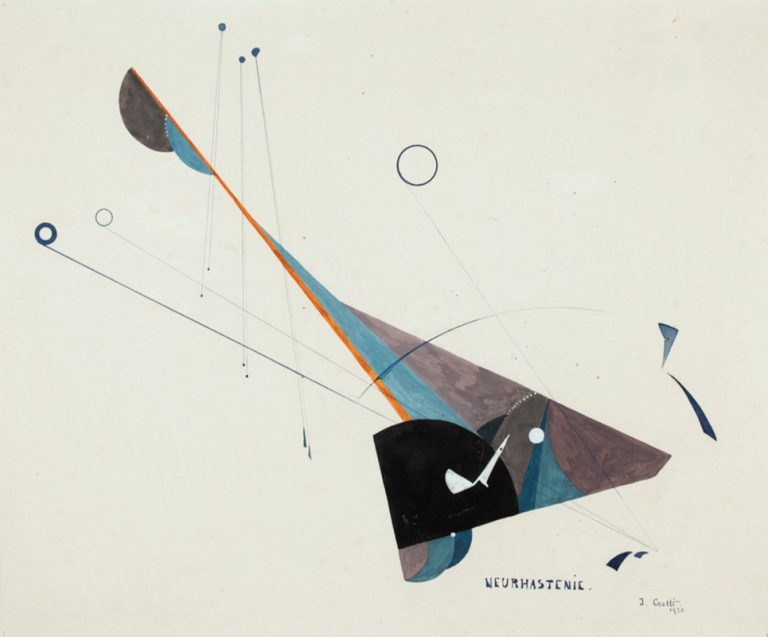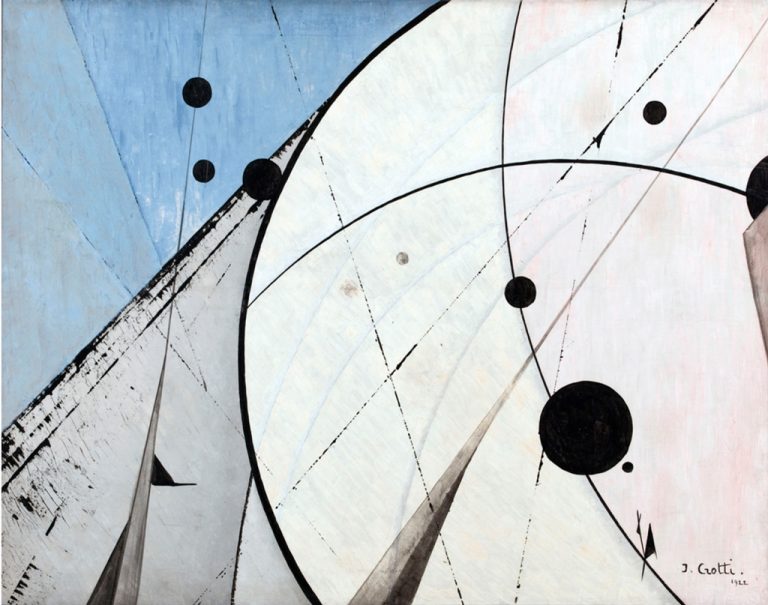The artistic beginnings
Jean Crotti was born on April 24, 1878, in Bulle, Canton Fribourg, in the French-speaking part of Switzerland. He joined his father’s painting business as an apprentice in 1890, laying the foundation for his artistic journey. In 1901, he moved to Paris, immersing himself in the vibrant artistic scene of Montmartre.
Until 1904, his work closely resembled Neo-Impressionism. By 1908, Crotti had made a significant impact by being accepted at the Salon des Indépendants, where he successfully sold his first canvas. He became a member the very next year and remained active in the salon until 1942.
From 1910 onwards, he actively engaged with the influential artists of the Puteaux group, including notable figures such as Jacques Villon, Marcel Duchamp, Raymond Duchamp-Villon, Albert Gleizes, and Francis Picabia. His style evolved into a strong alignment with the Orphism movement championed by Robert Delaunay.
The American Journey
In 1915, he decisively traveled to the United States and established himself in New York, a city ablaze with artistic innovation, fueled by a surge of artists fleeing the war, including Marcel Duchamp, Francis Picabia, Albert Gleizes, and Jean Metzinger.
He formed a strong bond with Marcel Duchamp, sharing a studio that would influence his creative direction profoundly. This pivotal encounter marked a definitive break from his early work, propelling him onto a new and exciting artistic path. In 1916, he confidently exhibited at the Montross Gallery in New York alongside prominent figures like Marcel Duchamp, Albert Gleizes, and Jean Metzinger.
After separating from his wife, Yvonne, he returned to Paris on his own. There, he reunited with Suzanne Duchamp, Marcel’s sister, who was serving as a nurse at the Hôpital des jeunes aveugles des Invalides. He married her in 1919, further solidifying his new life and artistic direction.
DADA
In February 1919, Crotti’s mechanomorphic drawing, « damier, » boldly graced the cover page of the eighth issue of Picabia’s revue, 391. At that time, he was undeniably one of the most influential artists in the Paris Dada movement, where he played a vital role.
On January 15, 1921, Jean Crotti and fellow Dada artists made a definitive statement by signing the leaflet “DADA soulève tout” (“DADA raises everything”). This demonstration was a clear rejection of the many movements falsely claiming to be modern, particularly Futurism.
Glass, light and movement
The 1930s-1950s were a period of experimentation with glass and light. In February 1934, Crotti gave a lecture at the Centre d’études des problèmes humains on the theme of “Shapes and colors in motion”. During this lecture, equipped with a magic lantern, he projected colored translucent materials onto a screen. This innovative experiment heralded the development of “gemmail”, a new lead-free stained-glass technique for which he filed a patent.
In 1937, he presented “Kalocolor Projections”, a system of light projections through transparent, colored bodies, then distorted by various sets of lenses at varying distances from each other, using the zoom principle to create an infinite stained-glass window in perpetual mutation.
The Cosmic Series
In 1949, Jean Crotti made a significant mark on the art world with his painting « Naissance d’un tourbillon » (Birth of a Whirlpool), introducing the concept of gyratory rhythm into his work. This pivotal moment marked the launch of his “Cosmic” series, where he revisited and expanded upon themes from his canvases of 1921 and 1922.
Crotti’s fascination with the mystery of the stars and the celestial vault is unmistakable. He boldly expressed this intrigue by integrating gyratory rhythms into his paintings, vividly depicting the dynamic motion of planets orbiting the sun.
On March 2, 1957, the gemmail decoration at the Franklin-Roosevelt metro station in Paris was inaugurated, and it continues to be a prominent feature to this day. Jean Crotti passed away in Paris on January 30, 1958, and he is interred at the Saint-Léonard cemetery in Fribourg, Switzerland.













